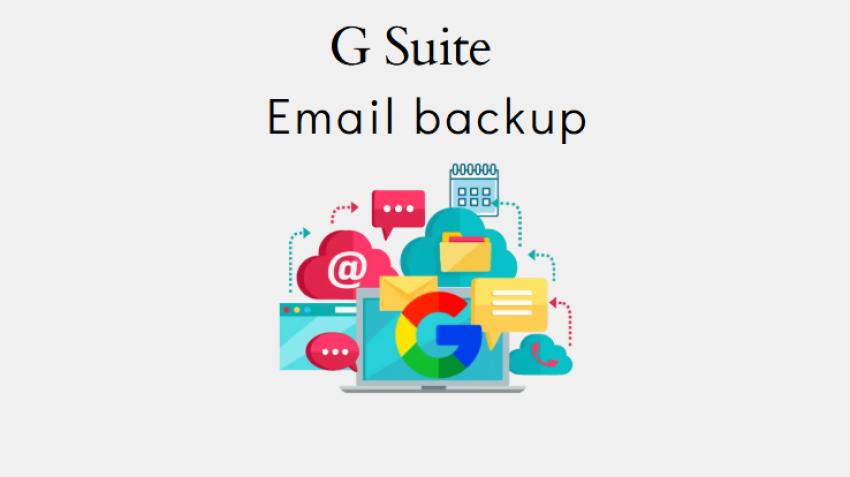
Google Workspace, formerly G Suite, is a cloud-based service provided by Google that enables seamless communication through email. The suite includes a number of user-friendly programs, including Google Docs, Google Drive, Google Meet, and Google Calendar. Nevertheless, there are some situations where one requires backing up G Suite email accounts. Below is a detailed step-by-step guide on how to back up G Suite email accounts.
Why do we need G Suite email backup?
To construct a stronger sense of why G Suite matters, it is necessary to consider the following:
- Sharing information with others is an easy process.
- It safeguards our data from inadvertent human error or inadvertent deletions.
- Whenever the server crashes, our data is safe.
- Information can also be retrieved offline through a backup.
G Suite Email Backup Procedures
In this tutorial, two particular utilities from the many options that exist will be explained: one is an Admin Data export utility, and the other is a G Suite backup utility.
Backup G Suite email with Data Export Admin
To use this approach, follow these steps:
- Go to your Google Workspace admin console.
- Navigate to the > icon in the Google Workspace admin console and click on Data Export.
- Finally, choose the Start Export option to start backing up Google Workspace emails.
- Wait for a while for the download link of the exported data.
- Once you obtain the link, visit it and still choose Access Archive in the hope of downloading the data.
A procedure for backing up Google Workspace mail via Data Export Admin is explained. Although the process appears to be simple, the process has come to be too restrictive when used with large amounts of data; the time in which the backup process to take place is far too lengthy, and it cannot be suspended once underway. Finally, the restriction involved makes this an unsuitable substitute for large-sized organizations.
G Suite's email backup with an automated tool
No matter what else is said or recommended, the simplest method of backing up Google Workspace email with less trouble is through the use of an automated software. Furthermore, there is plenty of software available to buy on the market; therefore, how are we supposed to determine which is most appropriate to use? In answer to this issue, in my opinion, I recommend using the Shoviv G Suite backup tool. It meets all criteria, and the whole procedure is quite simple.
Shoviv’s G Suite Backup Tool: Key Features
- It facilitates backing up more than one G Suite mailbox through super administrator accounts.
- Enables the backup data to be stored in different file formats such as PST, MBOX, MSG, MHT, and HTML.
- This plugin provides filtering options through which users can show or suppress messages within their G Suite inbox based on given criteria.
- The scheduling option for the backup process has been offered.
- The app has a feature called Incremental Backup, which enables the process to be used continuously without encouraging possible duplication.
Use the Shoviv G Suite backup software to safeguard your G Suite email.
- Start the Shoviv G Suite backup tool and go to the Connect Source option to connect to the G Suite.
- Enter information, i.e., project name. Enter information and press Connect.
- Now, go to the backup job location and press the Create backup job button.
- Where feasible, utilize the filter operation to choose and, if required, exclude data within the filter capabilities provided.
- Lastly, choose between the provided options, for instance, whether to start the backup job immediately or defer it to another time, and proceed by clicking on the corresponding option to set up the backup job.
- The software will continue with the process.
Conclusion
This article outlines two methods of backing up G Suite email: manual and automatic. Both processes enable the backup to be done, but the manual method tends to be inadequate, making it difficult to back up large volumes of data. The other method, however, shows excellence in all aspects of the backup process. Nevertheless, the selection between the two is dependent upon user needs, especially the amount of data they want to back up. In the case of large datasets, the automated tool is the better choice.





